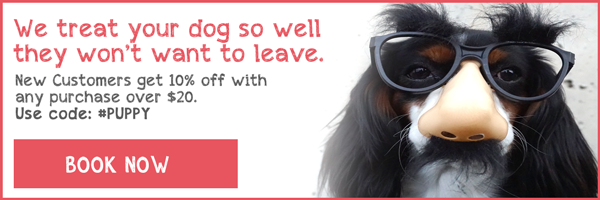Caring for your dog’s nutritional needs

Feeding your dog is an everyday process but when you’re faced with so many competing brands, and so many types of dog food, it’s enough to make your head spin. No dog owner wants to feed their pet poor-quality food, but when there’s barely time in the day to feed yourself, it can be easy to chuck the closest tin into the trolley and be done with it.
With this in mind, we’ve put together a quick guide to help you give your dog(s) the most nutritional meal possible.
Understand the buzzwords
Struggling to get your head around the marketing terminology emblazoned across every tin, packet and sachet you come across? The FDA provides a pretty comprehensive breakdown of what those food labels mean:
– Labels that sports phrases like “Beef for Dogs” and “Tuna Cat Food” mean that 95% of the product contains beef or tuna, and when water is added, that number is no lower than 70%.
– Labels that include the phrase “dinner”, “entree”, “formula” (i.e., “Beef Dinner for Dogs”) contain between 25% and 94% of the specified protein.
– Any time you see a label that has an added ingredient (with spinach; with kale) you know that that ingredient accounts for a mere 3% of the meal.
– Lastly, labels that talk about a specific flavor can have minute trace quantities of the specified protein. In other words, just enough for your dog to get the taste. Flavor doesn’t necessarily equate to a high-protein meal in this case.
Check whether the brand you’re buying is a member of the AAFCO
The Association of American Feed Control Officials is a voluntary member group, but any brand with a statement from the AAFCO on the back can be trusted. The organization keeps high standards, so keep that in mind the next time you go shopping.
It’s often best to choose U.S.
Dog food that’s made local is going to cost you more, but it’s worth the extra expenditure in the long run. In 2007, the FDA had to recall dog food imported from China because of tainted ingredients. Local is definitely better in this case.
Here are some general tips to keep in mind:
Puppies and lactating mothers need big portions
Always make sure you’re providing a diet high in calories to breastfeeding mothers and young pups.
Dogs in old age have the same nutritional requirements as adult dogs, but…
They tend to eat smaller portions because they’re far less active now that they’re in their later years.
Also, large energetic breeds will obviously go through food quicker than a small dog that sits on the couch all day.
Allergies to look out for
Is your dog licking its paws incessantly? Is it scratching itself? Does it have runny stools? Dogs can be allergic to the proteins in the food you’re buying, so take your animal to the vet if they start exhibiting signs of discomfort.
However, it’s worth mentioning that food allergies aren’t all that common, and that the much-hyped idea of a grain allergy is overemphasized. If your dog looks uncomfortable, it’s far more likely they’re reacting to environmental contaminants, like dust and mold.
Again, a vet will help you solve the mystery.
A proper diet has a huge number of benefits
Dogs are happiest when they’ve got plenty of exercise and they’re eating well. If you’re providing your animal a healthy, nutritious meal, they’re going to have a shiny coat and a lot of energy. So shop local products, check the label, and be prepared a little bit extra next time. Our thinking? It’s worth it.


Comments
Add comment